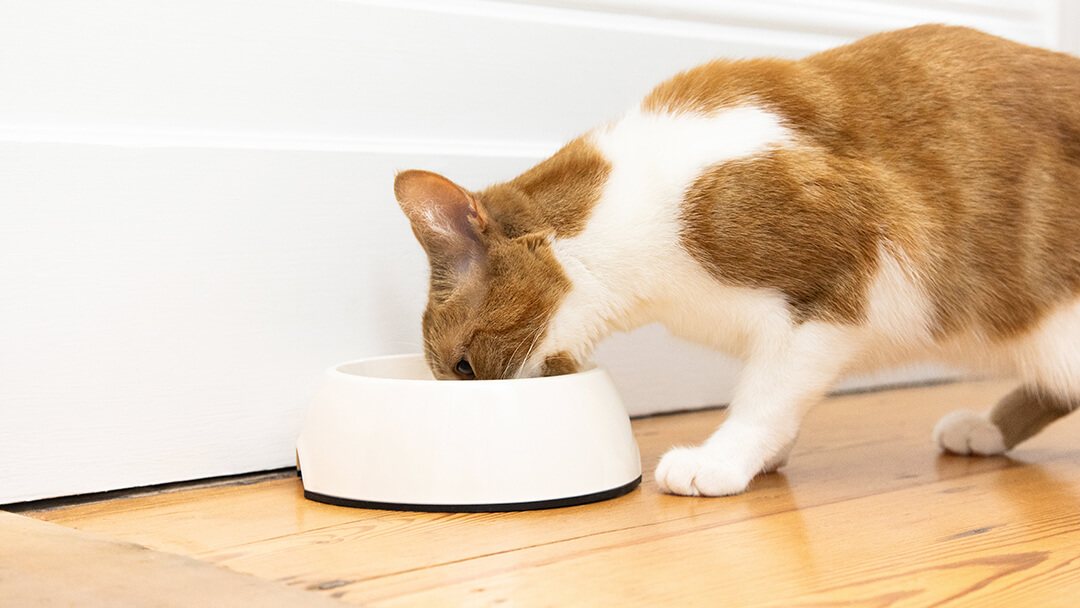
Diabetes in cats is a long-term condition, but it needn’t have an impact on your kitty’s quality of life. Find out what to do if you suspect your cat has diabetes and how to manage it with our guide.
Diabetes in cats is generally nothing to worry about – this long-term condition can certainly be managed with treatment, and it doesn’t need to impact hugely on your pet’s quality of life. In fact, with a little extra TLC, your cat will be back on all four paws before you know it. They’ll probably be causing mischief, getting attention from visitors, and escaping trouble just as they used to!
If you have a cat with diabetes or simply want to find out more about the condition, read on to find out all you need to know, including the various cat diabetes symptoms to look out for.
Diabetes in cats
There are various different types of diabetes in cats, just as there are in humans. If your cat has a type of diabetes, your vet will let you know what it is and how it works. The type one form which is most common in dogs is actually very rare in cats, and the most commonly found type of diabetes in cats is called ‘Type II Diabetes’, also known as ‘Diabetes Mellitus’ (DM).
What is cat Diabetes Mellitus (DM)?
Diabetes Mellitus is a condition where your cat has difficulty using sugar as an energy source. It changes the way their muscles use energy, and if left untreated can lead to weight change and further illness.
Normally, after your cat eats, their digestive system should break down their food into the different things it’s made from. One of those components is sugar (otherwise known as glucose). After the food is eaten and the glucose is extracted from it, your cat’s body should absorb the glucose; it goes from their digestive system into their bloodstream, where it is carried around the body. The glucose then reaches various organs in your cat’s body – the heart and other muscles, for example – and is used as energy to fuel their climbing, pouncing and playing!
Before your cat’s body can use glucose as fuel it needs insulin, a hormone produced by the pancreas. If for some reason your cat’s pancreas doesn’t produce enough insulin, or the insulin cannot be used properly, that glucose won’t pass from your cat’s blood into their organs.
When this happens, the glucose stays put – so there is too much sugar in your cat’s blood, which we know as diabetes in cats. When your cat has diabetes, their organs don’t get enough glucose to use as energy, so instead they use fat and protein to power them. Because of this, they lose weight and even muscle mass.
Which cats are most at risk?
Just like humans, some cats are more prone to diabetes than others, particularly older cats or those that are obese. If you suspect that you cat may be obese, check out our guide, full of useful information for overweight cats.
If you know what to look out for and spot the signs and symptoms of cat diabetes in good time, there’s plenty you can do to help.
Spotting the symptoms of cat diabetes
Spotting the symptoms of cat diabetes can be tricky, as our feline friends tend to keep things very much to themselves! However, with a watchful eye you might catch some of their symptoms before they become too much of a problem. Common symptoms to look out for include:
- Increased drinking
- Increased urination
- Increased eating
- Weight loss, despite eating more than usual
- Their coat might deteriorate in condition and appearance, so they don’t look as visibly healthy as usual.
If your cat has diabetes, their urine will contain more sugar than usual which might also cause recurrent urinary tract infections. If your cat gets these a lot, your vet might want to test for diabetes to make sure.
Some of these signs may also be present in the case of other medical conditions, so always seek veterinary advice even if you highly suspect it’s diabetes in cats.
Diagnosing cat diabetes
If Diabetes Mellitus is the suspected cause of your cat’s illness, as a first step your vet will probably take some blood and urine samples from them. This will help them measure the glucose levels in your cat’s body. Your cat will usually be admitted as an ‘in-patient’ for a day whilst these tests are carried out, so when you pick them up afterwards everything will be done.
Treating diabetes in cats
If there’s a lot of glucose present, your vet will then try to stabilise your cat’s blood glucose levels, usually through dietary control, administering insulin, or both. Your cat might need you to administer insulin to them at home, and your vet may also give you special advice about the best diet for them and optimal meal times.
Your cat will have to go back to the vet regularly so their progress can be monitored; they may need another diet change at some point, or your vet might say they need a change in their insulin levels. It’s as simple as that! Once you and your vet have found the right balance for your cat, and everything is under control, it should just be a matter of routine and regular check-ups that keeps your pet in tip-top condition.
Although treatment of diabetes in cats does need some time and commitment from you, it can usually be successfully treated in the long term. Most importantly, your cat will ultimately lead the happy life they had before – and you’ll be able to keep sharing it with them!
Want to find out more about your cat’s health? Read our guide on how to help your constipated cat.










